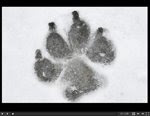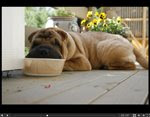 Christmas time is here, and I want to say merry christmas to all my friends and readers. A desire for a peaceful Christmas and a Happy New Year. I have found my christmas star. I hope everyone else also find her.
Christmas time is here, and I want to say merry christmas to all my friends and readers. A desire for a peaceful Christmas and a Happy New Year. I have found my christmas star. I hope everyone else also find her.Afrikaans: Geseënde Kersfees
Afrikander: Een Plesierige Kerfees
African/ Eritrean/ Tigrinja: Rehus-Beal-Ledeats
Albanian:Gezur Krislinjden
Arabic: Milad Majid
Argentine: Feliz Navidad
Armenian: Shenoraavor Nor Dari yev Pari Gaghand
Azeri: Tezze Iliniz Yahsi Olsun
Bahasa Malaysia: Selamat Hari Natal
Basque: Zorionak eta Urte Berri On!
Bengali: Shuvo Naba Barsha
Bohemian: Vesele Vanoce
Bosnian: (BOSANSKI) Cestit Bozic i Sretna Nova godina
Brazilian: Feliz Natal
Breton: Nedeleg laouen na bloavezh mat
Bulgarian: Tchestita Koleda; Tchestito Rojdestvo Hristovo
Catalan: Bon Nadal i un Bon Any Nou!
Chile: Feliz Navidad
Chinese: (Cantonese) Gun Tso Sun Tan'Gung Haw Sun
Chinese: (Mandarin) Kung His Hsin Nien bing Chu Shen Tan (Catonese) Gun Tso Sun Tan'Gung Haw Sun
Choctaw: Yukpa, Nitak Hollo Chito
Columbia: Feliz Navidad y Próspero Año Nuevo
Cornish: Nadelik looan na looan blethen noweth
Corsian: Pace e salute
Crazanian: Rot Yikji Dol La Roo
Cree: Mitho Makosi Kesikansi
Croatian: Sretan Bozic
Czech: Prejeme Vam Vesele Vanoce a stastny Novy Rok
Danish: Glædelig Jul
Duri: Christmas-e- Shoma Mobarak
Dutch: Vrolijk Kerstfeest en een Gelukkig Nieuwjaar! or Zalig Kerstfeast
English: Merry Christmas
Eskimo: (inupik) Jutdlime pivdluarit ukiortame pivdluaritlo!
Esperanto: Gajan Kristnaskon
Estonian: Rõõmsaid Jõulupühi
Ethiopian: (Amharic) Melkin Yelidet Beaal
Faeroese: Gledhilig jol og eydnurikt nyggjar!
Farsi: Cristmas-e-shoma mobarak bashad
Finnish: Hyvaa joulua
Flemish: Zalig Kerstfeest en Gelukkig nieuw jaar
French: Joyeux Noel
Frisian: Noflike Krystdagen en in protte Lok en Seine yn it Nije Jier!
Galician: Bo Nada
Gaelic: Nollaig chridheil agus Bliadhna mhath ùr!
German: Fröhliche Weihnachten
Greek: Kala Christouyenna!
Haiti: (Creole) Jwaye Nowel or to Jesus Edo Bri'cho o Rish D'Shato Brichto
Hausa: Barka da Kirsimatikuma Barka da Sabuwar Shekara!
Hawaiian: Mele Kalikimaka
Hebrew: Mo'adim Lesimkha. Chena tova
Hindi: Shub Naya Baras (good New Year not Merry Christmas)
Hausa: Barka da Kirsimatikuma Barka da Sabuwar Shekara!
Hawaian: Mele Kalikimaka ame Hauoli Makahiki Hou!
Hungarian: Kellemes Karacsonyi unnepeket
Icelandic: Gledileg Jol
Indonesian: Selamat Hari Natal
Iraqi: Idah Saidan Wa Sanah Jadidah
Irish: Nollaig Shona Dhuit, or Nodlaig mhaith chugnat
Iroquois: Ojenyunyat Sungwiyadeson honungradon nagwutut. Ojenyunyat osrasay.
Italian: Buone Feste Natalizie
Japanese: Shinnen omedeto. Kurisumasu Omedeto
Jiberish: Mithag Crithagsigathmithags
Korean: Sung Tan Chuk Ha
Lao: souksan van Christmas
Latin: Natale hilare et Annum Faustum!
Latvian: Prieci'gus Ziemsve'tkus un Laimi'gu Jauno Gadu!
Lausitzian:Wjesole hody a strowe nowe leto
Lettish: Priecigus Ziemassvetkus
Lithuanian: Linksmu Kaledu
Low Saxon: Heughliche Winachten un 'n moi Nijaar
Macedonian: Sreken Bozhik
Maltese: IL-Milied It-tajjeb
Manx: Nollick ghennal as blein vie noa
Maori: Meri Kirihimete
Marathi: Shub Naya Varsh (good New Year not Merry Christmas)
Navajo: Merry Keshmish
Norwegian: God Jul, or Gledelig Jul
Occitan: Pulit nadal e bona annado
Papiamento: Bon Pasco
Papua New Guinea: Bikpela hamamas blong dispela Krismas na Nupela yia i go long yu
Pennsylvania German: En frehlicher Grischtdaag un en hallich Nei Yaahr!
Peru: Feliz Navidad y un Venturoso Año Nuevo
Philipines: Maligayan Pasko!
Polish: Wesolych Swiat Bozego Narodzenia or Boze Narodzenie
Portuguese:Feliz Natal
Pushto: Christmas Aao Ne-way Kaal Mo Mobarak Sha
Rapa-Nui (Easter Island): Mata-Ki-Te-Rangi. Te-Pito-O-Te-Henua
Rhetian: Bellas festas da nadal e bun onn
Romanche: (sursilvan dialect): Legreivlas fiastas da Nadal e bien niev onn!
Rumanian: Sarbatori vesele or Craciun fericit
Russian: Pozdrevlyayu s prazdnikom Rozhdestva is Novim Godom
Sami: Buorrit Juovllat
Samoan: La Maunia Le Kilisimasi Ma Le Tausaga Fou
Sardinian: Bonu nadale e prosperu annu nou
Serbian: Hristos se rodi
Slovakian: Sretan Bozic or Vesele vianoce
Sami: Buorrit Juovllat
Samoan: La Maunia Le Kilisimasi Ma Le Tausaga Fou
Scots Gaelic: Nollaig chridheil huibh
Serbian: Hristos se rodi.
Singhalese: Subha nath thalak Vewa. Subha Aluth Awrudhak Vewa
Slovak: Vesele Vianoce. A stastlivy Novy Rok
Slovene: Vesele Bozicne Praznike Srecno Novo Leto or Vesel Bozic in srecno Novo leto
Spanish: Feliz Navidad
Swedish: God Jul and (Och) Ett Gott Nytt År
Tagalog: Maligayamg Pasko. Masaganang Bagong Taon
Tamil: (Tamizh) Nathar Puthu Varuda Valthukkal (good New Year not Merry Christmas)
Trukeese: (Micronesian) Neekiriisimas annim oo iyer seefe feyiyeech!
Thai: Sawadee Pee Mai or souksan wan Christmas
Turkish: Noeliniz Ve Yeni Yiliniz Kutlu Olsun
Ukrainian: Srozhdestvom Kristovym or Z RIZDVOM HRYSTOVYM
Urdu: Naya Saal Mubarak Ho (good New Year not Merry Christmas)
Vietnamese: Chuc Mung Giang Sinh
Welsh: Nadolig Llawen
Yoruba: E ku odun, e ku iye'dun!
Best regards
Leon














 I like to go hicking. Sometimes I meet on other animals such as horses, dogs, pigs and others animals. Sometimes I meet the animals on a farm, but often I meet them on my many trips. I like virtually all animals. But not cats, for they tend to tease me, and I do not like it. I attach some pictures where I meet other animals, so you can see for yourself. Hope you like them.
I like to go hicking. Sometimes I meet on other animals such as horses, dogs, pigs and others animals. Sometimes I meet the animals on a farm, but often I meet them on my many trips. I like virtually all animals. But not cats, for they tend to tease me, and I do not like it. I attach some pictures where I meet other animals, so you can see for yourself. Hope you like them.






